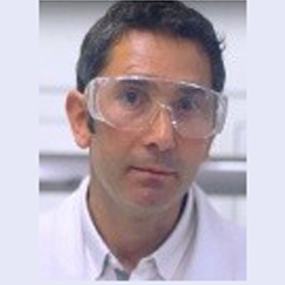Photocatalytic Water Splitting
A special issue of Catalysts (ISSN 2073-4344). This special issue belongs to the section "Photocatalysis".
Deadline for manuscript submissions: closed (30 April 2019) | Viewed by 32260
Special Issue Editors
Interests: bioinorganic; biomimetic catalysts; supramolecular; superoxide dismutase; catalase; peroxidase; artificial photosynthesis
Special Issues, Collections and Topics in MDPI journals
Interests: water splitting; artificial photosynthesis; photochemistry; photoactive materials; nanomaterials
Special Issues, Collections and Topics in MDPI journals
Special Issue Information
Dear Colleagues,
Photocatalytic water splitting constitutes one major goal that addresses both the fundamental science and practical applications of renewable energy production. The Oxygen Evolving Complex (OEC) is the native enzyme that catalyzes the oxidation of water in natural photosynthesis to release oxygen. The creation of biomimetic systems to reproduce the basic chemistry of this process gives us more insight into better understanding this crucial natural reaction which is responsible of the atmospheric oxygen that we breathe. On the other hand, the growing world energy demand, along with the need for control of gas emissions, explains the current relevance of the conversion of solar energy to hydrogen by means of water splitting process. Decomposing water is the more direct way to produce hydrogen, which can be stored and utilized as a transportable fuel or converted into energy-rich organic molecules, to cope with the intermittent character of the solar radiation.
This Special Issue aims to cover recent progress and developments in fabricating stable and highly active catalysts for photochemical water oxidation. Moreover, the research for understanding the fine details of natural photosynthesis, as well as the advances in the area of solar-powered fuel generation, should be important subjects for this Special Issue.
Prof. Dr. Marcelino Maneiro
Dr. Pau Farràs Costa
Guest Editor
Manuscript Submission Information
Manuscripts should be submitted online at www.mdpi.com by registering and logging in to this website. Once you are registered, click here to go to the submission form. Manuscripts can be submitted until the deadline. All submissions that pass pre-check are peer-reviewed. Accepted papers will be published continuously in the journal (as soon as accepted) and will be listed together on the special issue website. Research articles, review articles as well as short communications are invited. For planned papers, a title and short abstract (about 100 words) can be sent to the Editorial Office for announcement on this website.
Submitted manuscripts should not have been published previously, nor be under consideration for publication elsewhere (except conference proceedings papers). All manuscripts are thoroughly refereed through a single-blind peer-review process. A guide for authors and other relevant information for submission of manuscripts is available on the Instructions for Authors page. Catalysts is an international peer-reviewed open access monthly journal published by MDPI.
Please visit the Instructions for Authors page before submitting a manuscript. The Article Processing Charge (APC) for publication in this open access journal is 2700 CHF (Swiss Francs). Submitted papers should be well formatted and use good English. Authors may use MDPI's English editing service prior to publication or during author revisions.
Keywords
- Water splitting
- artificial photosynthesis
- photocatalysts
- hydrogen generation
- oxygen evolution
- carbon dioxide
- renewable energy
- energy storage
Benefits of Publishing in a Special Issue
- Ease of navigation: Grouping papers by topic helps scholars navigate broad scope journals more efficiently.
- Greater discoverability: Special Issues support the reach and impact of scientific research. Articles in Special Issues are more discoverable and cited more frequently.
- Expansion of research network: Special Issues facilitate connections among authors, fostering scientific collaborations.
- External promotion: Articles in Special Issues are often promoted through the journal's social media, increasing their visibility.
- e-Book format: Special Issues with more than 10 articles can be published as dedicated e-books, ensuring wide and rapid dissemination.
Further information on MDPI's Special Issue polices can be found here.






